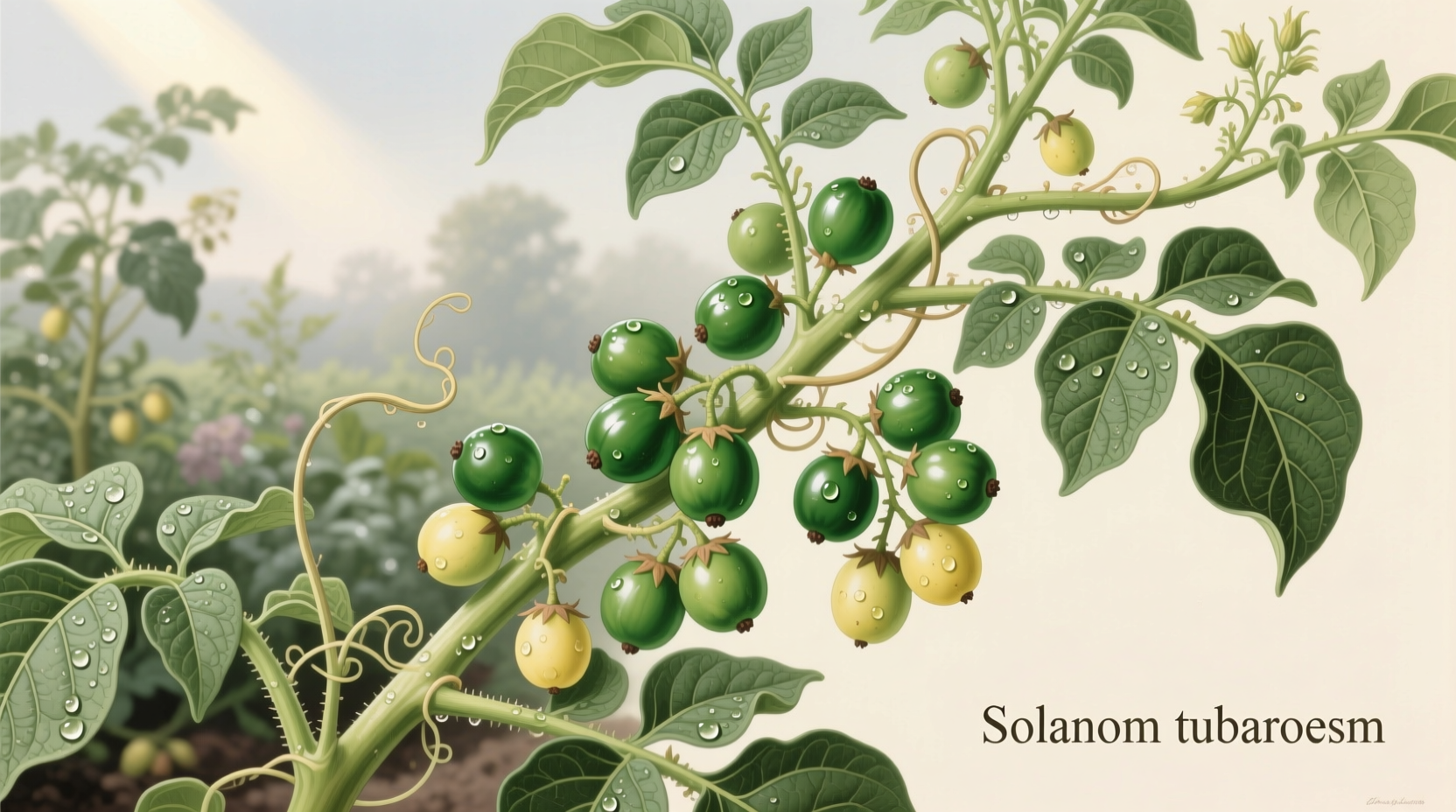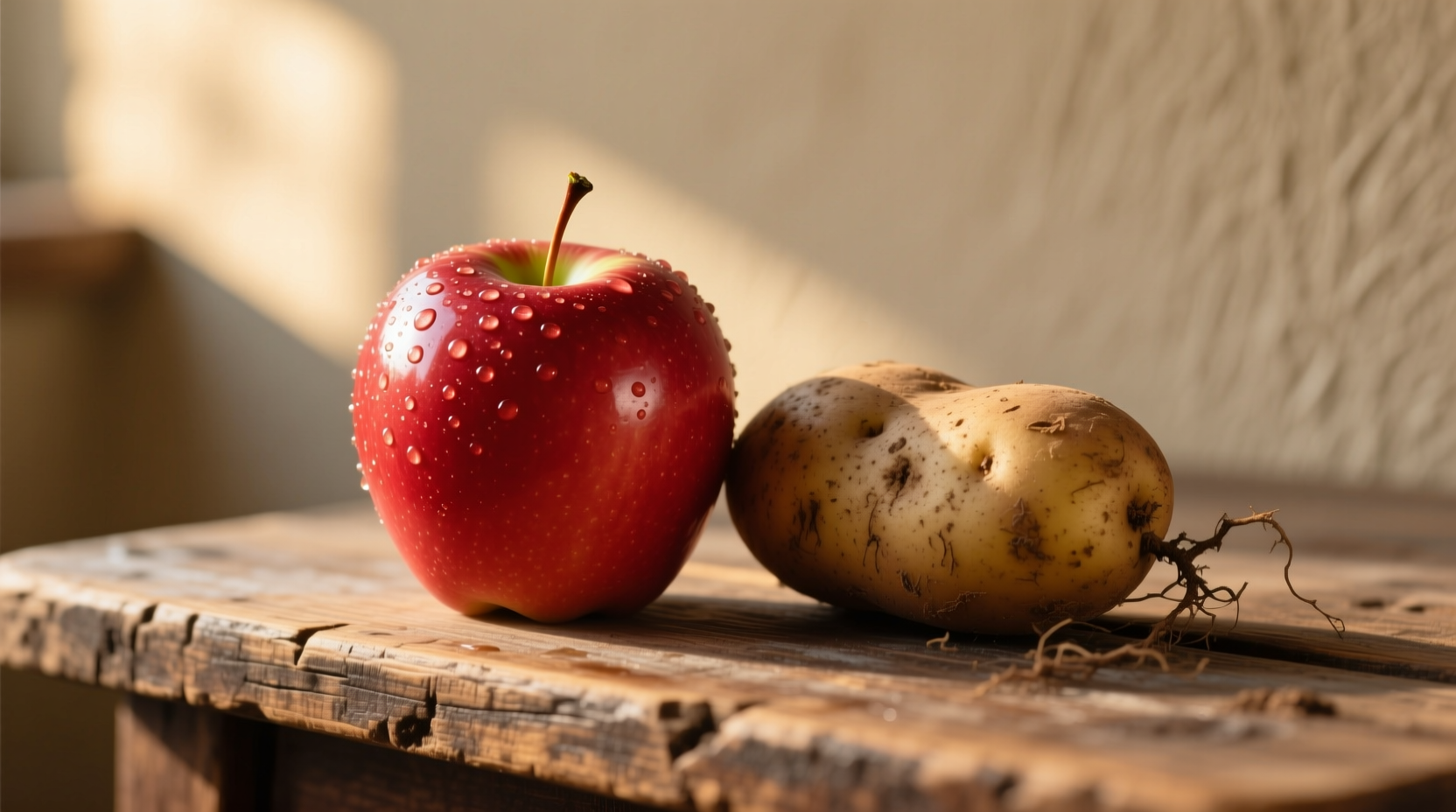When you hear the term "fruit potato," it's natural to feel confused. After all, potatoes are vegetables, right? As someone who's studied indigenous crops across Latin America for over a decade, I've encountered this confusion repeatedly. Let's clarify this botanical mystery once and for all.
Why the Term "Fruit Potato" Creates Confusion
The confusion stems from fundamental misunderstandings about plant classification. In culinary terms, we call potatoes vegetables, but botanically speaking, the distinction between fruits and vegetables follows different rules:
| Classification Type | Definition | Where Potatoes Fit |
|---|---|---|
| Culinary | Based on taste and usage in cooking | Vegetable (starchy side dish) |
| Botanical | Based on plant anatomy and reproduction | Tuber (underground storage organ) |
| True Fruit | Mature ovary of a flowering plant containing seeds | Potatoes don't produce edible fruits |
The Truth About Potato "Fruits"
Potato plants (Solanum tuberosum) do produce what botanists call fruits—but these aren't the edible kind you'd find in a grocery store. These small, green, tomato-like berries:
- Develop after the plant flowers
- Contain true seeds (unlike the "eyes" on potato tubers)
- Are highly toxic due to solanine and other glycoalkaloids
- Should never be consumed
According to the USDA Agricultural Research Service, these fruits serve the plant's reproductive purpose in the wild but have no culinary value for humans. In fact, consuming them can cause nausea, vomiting, and in severe cases, neurological problems.

What You're Probably Actually Looking For
Based on my field research across Latin America, most people searching for "fruit potato" are actually looking for one of these edible alternatives:
Sweet Potatoes vs. Regular Potatoes
Sweet potatoes (Ipomoea batatas) are often confused with regular potatoes, but they're completely different plants. While both are tubers, sweet potatoes belong to the morning glory family and have distinct nutritional profiles. Unlike potato fruits, sweet potato vines rarely produce flowers or fruits in typical growing conditions.
Jicama: The "Mexican Potato"
In my travels through Mexican markets, I've found that jicama (Pachyrhizus erosus) is frequently called " Mexican potato" or "yam bean." This crisp, sweet tuber:
- Is botanically related to beans
- Produces edible tubers but toxic seeds and pods
- Has a refreshing, slightly sweet flavor
- Is commonly eaten raw in Latin American cuisine
Andean Tubers: Oca and Ulluco
In the Andean highlands where potatoes originated, indigenous communities cultivate several related tubers that might cause confusion:
- Oca (Oxalis tuberosa): Has a tangy flavor, often called "New Zealand yam"
- Ulluco (Ullucus tuberosus): Known for its vibrant colors and crisp texture
- Mashua (Tropaeolum tuberosum): Peppery flavor with medicinal properties
These traditional crops have been cultivated for thousands of years but remain relatively unknown outside their native regions.
Practical Guidance for Gardeners and Cooks
If you're growing potatoes at home, here's what you need to know about those mysterious fruits:
- Don't eat them—they contain dangerous levels of solanine
- Remove them promptly to prevent accidental ingestion, especially by children
- Focus on the tubers—the part we call "potatoes" are safe when properly prepared
- Store potatoes correctly in a cool, dark place to prevent greening (which increases solanine)
For culinary use, stick with the familiar potato tubers or explore genuinely edible alternatives like jicama, which provides a similar starchy base without the confusion.
Understanding Botanical Classification
The reason for this confusion lies in how we categorize plants. Botanically, a fruit is the mature ovary of a flowering plant that contains seeds. By this definition:
- Tomatoes, cucumbers, and peppers are fruits (but culinarily vegetables)
- Potatoes are tubers—swollen underground stems for storage
- Sweet potatoes are root vegetables (true roots, not stems)
This distinction matters because it affects how the plant grows, reproduces, and what parts are safe to eat. The University of California Agriculture and Natural Resources confirms that while potato plants produce both tubers (for vegetative reproduction) and fruits (for sexual reproduction), only the tubers are suitable for human consumption.











 浙公网安备
33010002000092号
浙公网安备
33010002000092号 浙B2-20120091-4
浙B2-20120091-4